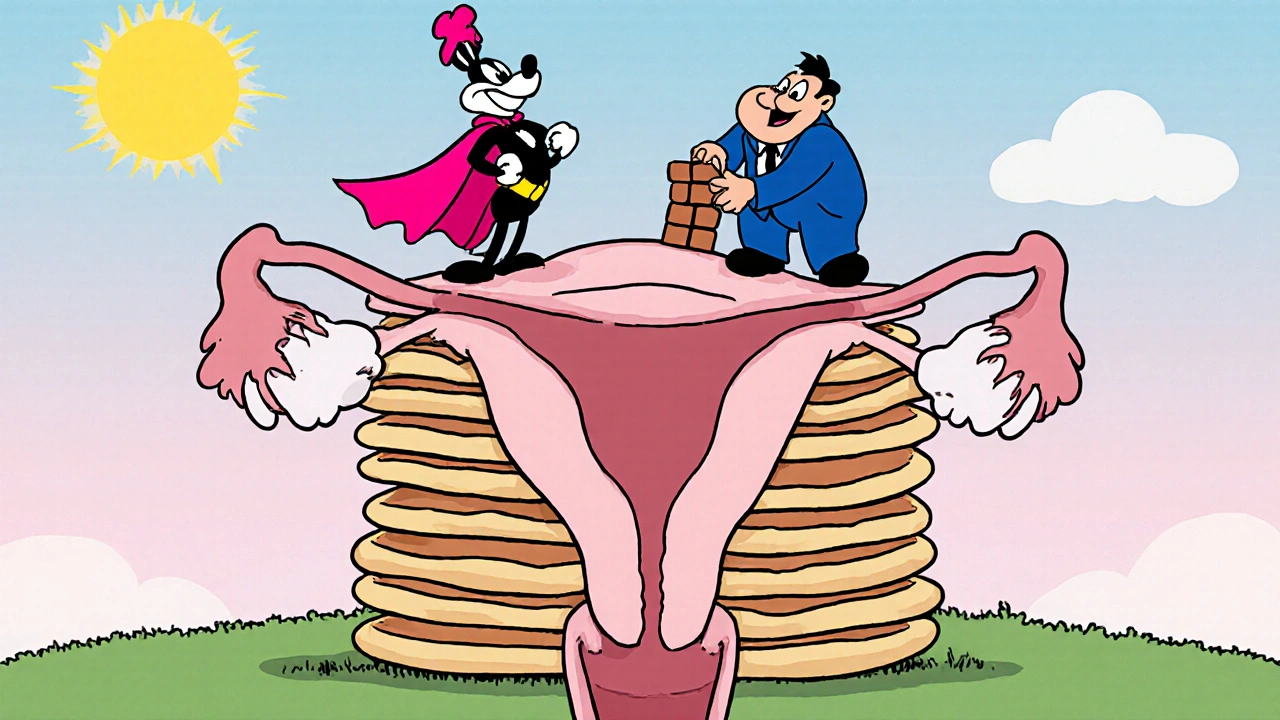Uterine Lining Overgrowth – What You Need to Know
If you’ve heard doctors mention a “thick uterine lining” or “endometrial hyperplasia,” they’re talking about uterine lining overgrowth. In plain terms, the inner wall of the uterus (the endometrium) gets thicker than it should. This can happen for several reasons and may cause spotting, irregular periods, or even pain.
Why Does the Lining Grow Too Much?
Hormones are the main drivers. Estrogen tells the lining to grow each month, while progesterone tells it to shrink after ovulation. When estrogen stays high or progesterone is low, the lining keeps building up. Common triggers include:
- Polycystic ovary syndrome (PCOS)
- Obesity – extra fat makes more estrogen
- Unopposed estrogen therapy (like some hormone‑replacement regimens)
- Perimenopause – hormone swings are wild
- Certain medications such as tamoxifen
In a few cases, the overgrowth can be a warning sign of early‑stage cancer, so getting it checked early matters.
How to Spot It and Get It Checked
Most people notice something isn’t right when they get:
- Unexpected spotting between periods
- Heavier or longer periods than usual
- Painful periods that feel different
If any of these stick around for a couple of months, book an appointment. Doctors usually start with a pelvic exam and an ultrasound. The scan shows how thick the lining is; anything over about 12‑14 mm after a period can be a red flag. They might also take a small tissue sample (a biopsy) to rule out precancerous cells.
When the diagnosis is confirmed, treatment depends on why the lining is thick and whether you want to preserve fertility.
- Progestin therapy: A pill, IUD, or injection that adds progesterone to balance estrogen.
- Weight management: Losing a few pounds can drop estrogen levels and thin the lining.
- Adjusting medications: If you’re on estrogen‑only hormone therapy, your doctor may switch you to a combined formula.
- Endometrial ablation: A minor procedure that destroys part of the lining—usually for women who don’t plan more pregnancies.
- Hysterectomy: Rarely, surgery to remove the uterus is considered when other options fail and the risk of cancer is high.
Follow‑up appointments are key. Even after treatment, doctors like to check the lining every 6‑12 months to make sure it stays normal.
Bottom line: uterine lining overgrowth isn’t something to ignore, but it’s also not a death sentence. Simple hormone tweaks, lifestyle changes, or low‑risk procedures can keep things under control. If you’ve got irregular bleeding or any of the symptoms above, reach out to your healthcare provider—early action makes treatment easier and more effective.
Uterine Lining Overgrowth and Its Impact on Your Sex Life
Learn how a thickened uterine lining (endometrial hyperplasia) can cause pain, dryness, and low libido, and discover diagnosis steps, treatment options, and tips to protect your sex life.
MoreEndometrial Hyperplasia: How It Drives Uterine Lining Overgrowth & Cancer Risk
Learn how endometrial hyperplasia causes the uterine lining to thicken, its hormonal triggers, cancer risk, diagnosis, and treatment options in clear, practical terms.
More

